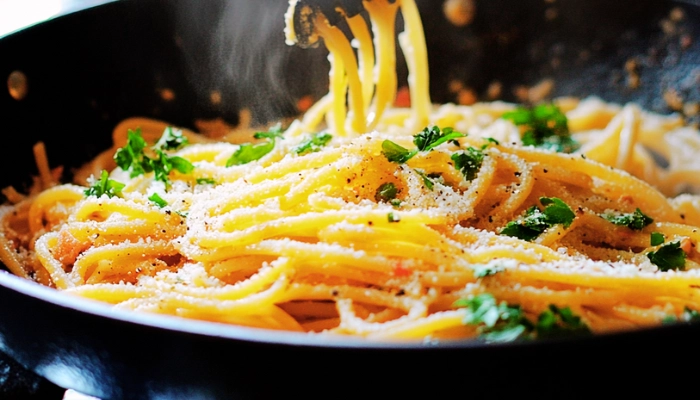
Ah, pasta—the ultimate comfort food! Whether it’s spaghetti, penne, or fettuccine, we all love a good bowl of noodles. But here’s the catch: cooking pasta isn’t as foolproof as it seems. Even seasoned cooks sometimes fall into common traps that can turn a delightful dish into a disappointing mess. Let’s uncover the top mistakes to avoid so your pasta can always be restaurant-worthy.
When cooking pasta, the amount of water matters. Too little water means your pasta doesn’t have enough room to cook properly. It can also become sticky, as there’s not enough water to dilute the released starch.
Use at least 4-6 quarts of water per pound of pasta. A large pot ensures the noodles cook evenly without clumping together.
Unsalted water equals bland pasta. Many people skip this step or add too little salt, but this is your only chance to season the pasta itself.
Aim for the water to taste “like the sea.” That’s about 1-2 tablespoons of salt for every 4-6 quarts of water.
If you’re impatient and throw pasta into water before it boils, you risk uneven cooking. The pasta starts to absorb water at different rates, resulting in a gummy texture.
Always wait until the water is at a full, rolling boil before adding the pasta. This ensures even cooking and prevents sticking.
Pasta that’s too soft or too firm can ruin your dish. Overcooking makes it mushy, while undercooking leaves it chewy and unpleasant.
Follow the package instructions, but start tasting the pasta a minute or two before the recommended time. It should have a slight bite but no raw taste.
Rinsing pasta washes away the starch, which is crucial for helping sauces cling to the noodles. It also cools the pasta unnecessarily, which can be problematic if you’re serving it hot.
Only rinse pasta if you’re making a cold pasta salad. Otherwise, skip it!
That cloudy, starchy pasta water isn’t trash—it’s liquid gold. It can transform your sauces by helping them emulsify and stick to the pasta.
Before draining the pasta, scoop out a cup of the cooking water. Add it to your sauce a little at a time to adjust consistency and flavor.
While sauce is important, drowning your pasta in it can overwhelm the dish. Instead, aim for a balance where the pasta and sauce complement each other.
Toss the pasta in the sauce for a few minutes on the stove before serving. This helps the noodles absorb the flavors.
Cooking pasta perfectly isn’t rocket science, but it does require attention to detail. By avoiding these common mistakes, you’ll elevate your pasta dishes and impress everyone at the table. Remember, it’s all about small changes that make a big difference.
1. How much water should I use for cooking pasta?
At least 4-6 quarts of water per pound of pasta.
2. Can I add oil to the pasta water?
No, oil prevents the sauce from sticking to the pasta.
3. How do I store leftover pasta?
Store it in an airtight container in the refrigerator for up to 3 days.
4. What’s the best way to reheat pasta?
Reheat in a skillet with a bit of sauce or reserved pasta water for freshness.
5. Can I freeze cooked pasta?
Yes, freeze cooked pasta in a freezer-safe container for up to 2 months. Reheat directly from frozen for best results.